Let’s Talk Mid-Century Modern Furniture
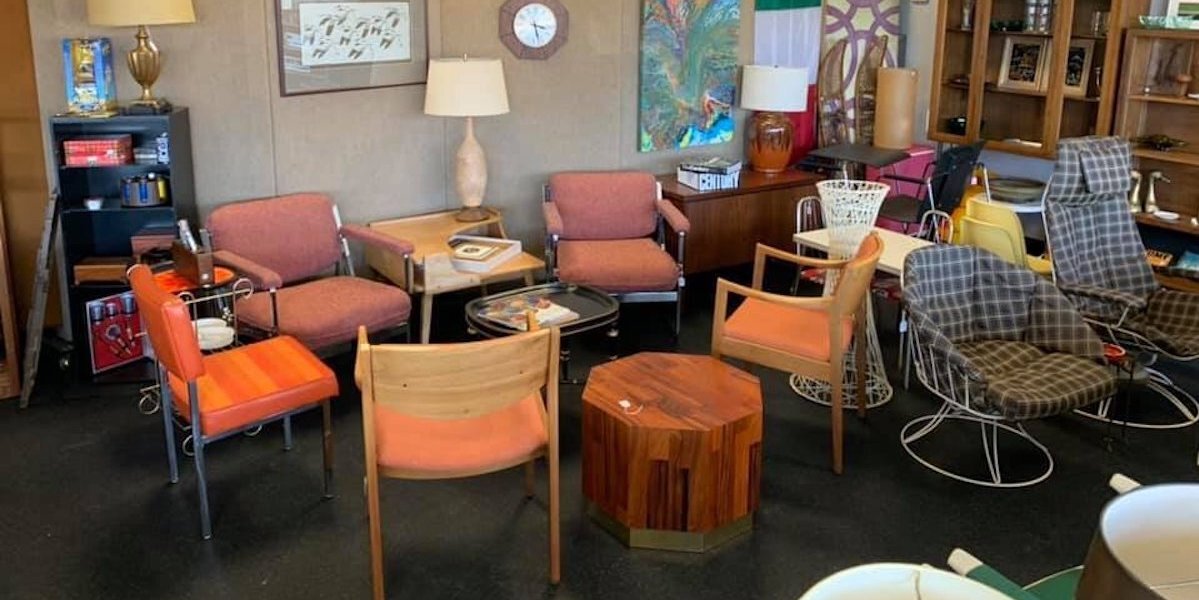
Posted on 28 March 2022

Do you own any pieces from this iconic design era? Chances are if you are a mid-century modern enthusiast, you will already know their value. But what if you inherited your relative's estate and you found some Broyhill Brasilia dining chairs? Or if you scored at the thrift store and found a Heywood Wakefield buffet? Are your pieces original or reproduction? How much are your pieces worth on the open market? Keep reading if you are interested in learning more about midcentury-modern furniture.
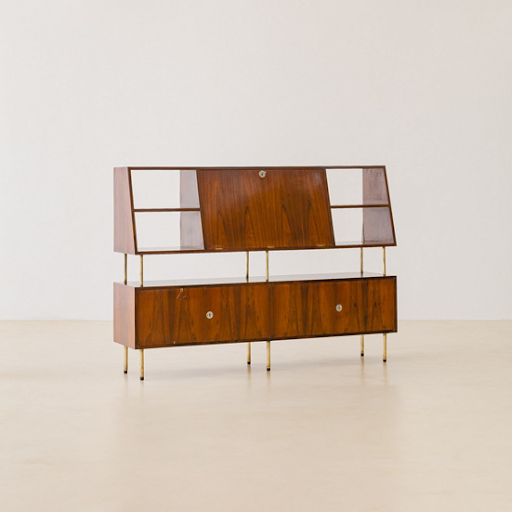
Bookshelf by Carlo Hauner and Martin Eisler, Mid-century Modern,1955
Rosewood, Brass, Glass
Image Credit: Bossa Furniture
Let's briefly review the timeline of mid-century modern design
-
1.Mid-century modern-Refers to a specific era (mid-1940s-1950s) within the broader modernist movement that emerged post WWI and continued through the 1960s.
-
2.Although modernist concepts originated before the 1920s-1930s, it was during this period that abstractionism began replacing conventional concepts in art and design.
-
3.For historical context, I also want to mention two notable movements which predated the modernist period, those of Arts and Crafts and Art Nouveau.
-
4.Arts and Crafts- Was an anti-industrial trend that began in the British Isles and eventually spanned throughout Europe and North America (1880-1920), this movement was focused on traditional craftsmanship.
-
5.Art Nouveau- This international style (1890-1910) rose to popularity with its curving, undulating lines, and natural forms.
-
6.Art Deco- First appeared in France (1910-1939) and spread throughout the world. This style featured bold geometric forms, vertical lines, and high-quality craftsmanship.
-
7.Art Moderne (Streamline Moderne)-(1920-1945). This influential style was characterized by streamlined, horizontal lines, and curved edges, the aesthetics of machine mass-production.
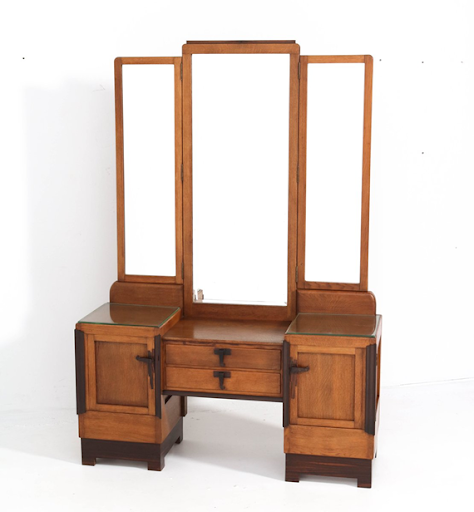
Vanity by C.H. Eckhart Rotterdam, Art Deco, 1920s
Oakwood, Glass, Ebony
Image Credit: Pamono
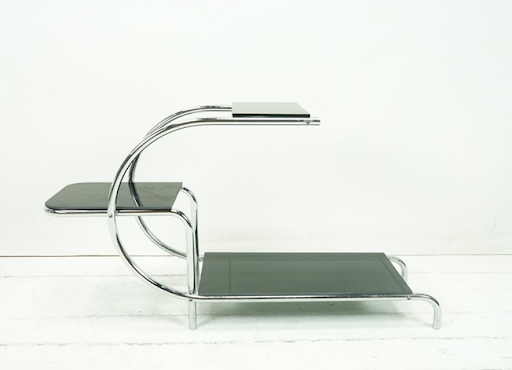
Bauhaus Etagere by Emile Guyot, Art Moderne, 1930s
Steel, Wood
Image Credit: Pamono
Let's talk about what makes mid-century modern furniture so iconic
-
1.Simple Lines
-
2.Low profiles
-
3.Functionality
-
4.Innovative use of new materials
-
5.Designed for industrial production
The beauty of mid-century modern design is that it embodies both pragmatic ideals and futuristic concepts. At its heart, mid-century modern furniture design is a rejection of the ornate embellishments characterized in traditional styles, embracing instead the simplicity of the “form follows function” principle.
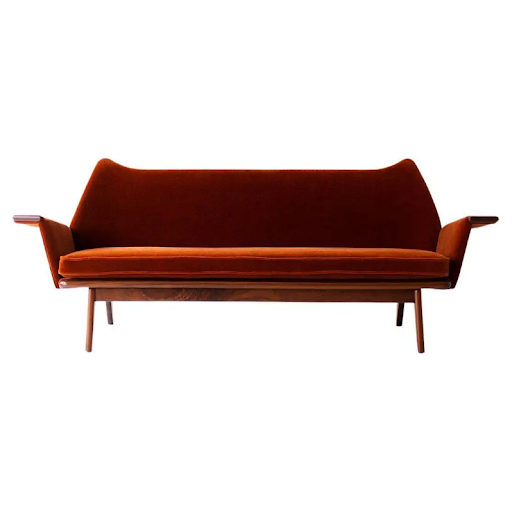
Mohair Sofa by Adrian Pearsall for Craft Associates Inc., Mid-century Modern, 1950s
Walnut wood, Mohair
Image Credit: 1stDibs
You will find a variety of materials used in this style:
-
1.Plastic
-
2.Fiberglass
-
3.Metal
-
4.Glass
-
5.Wood- most popular choices were teak, beech, oak, rosewood, elm, and walnut
-
6.Plywood- which became widely available post WWII
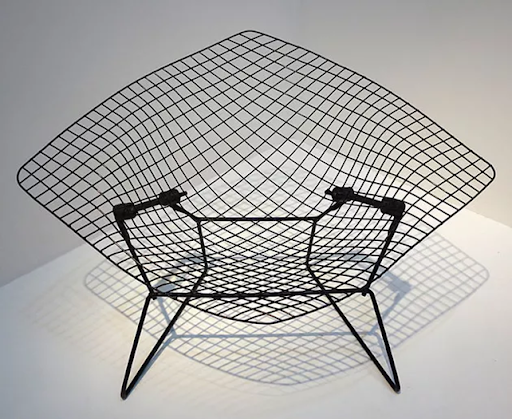
Diamond chair by Harry Bertoia, Mid-century Modern, 1952
Metal Wire
Image Credit: Sandstein / Wikimedia Commons
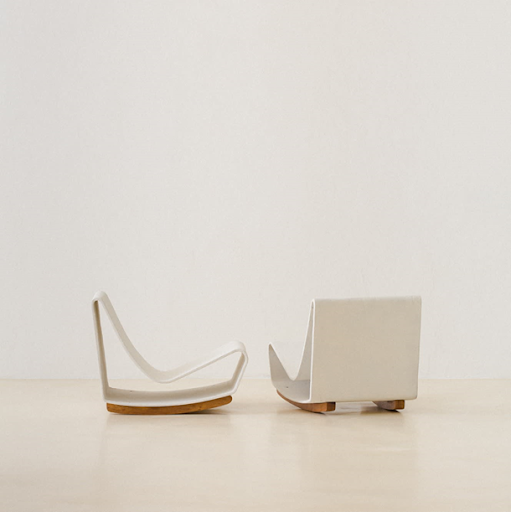
Loop Chairs by Willy Guhl, Mid-century Modern, 1954
Fiber-Cement
Image Credit: Bossa Furniture
The famous American industrial designer George Nelson categorized the mid-century modern style into three branches:
-
1.The bio-morphic-Characterized by its curvilinear lines and smooth surfaces. You will find organic forms such as kidney, boomerang, and cloud shapes.
-
2.The machine look-Known for its stark geometric lines and space-age forms, influenced from Bauhaus and Streamline Moderne, and cross-referencing the aesthetics of Atomic Age style.
-
3.The 'hand-crafted' Scandinavian design movement-With its functional minimalism and gracefully shaped wood forms. Despite the handmade aesthetics of this design style, it was conceived and designed for industrial production, just as the other branches were.
Let's talk about mid-century modern furniture's popularity then and now
After the turmoil of the Great Depression and WWII, the mid-century era saw a period of economic reconstruction and renewed optimism. For the first time, average people had access to new technology and could afford mass-produced consumer goods. With the help of modern marketing, furniture makers were able to attract consumers like never before and the popularity of the style reached its heyday.
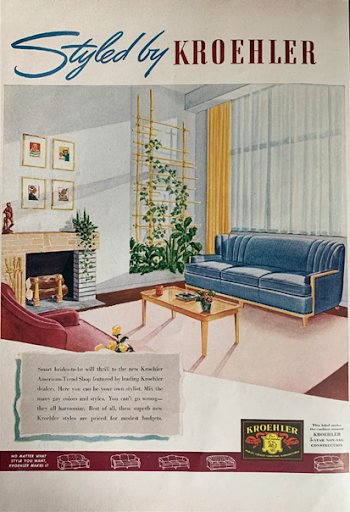
Kroehler Furniture Co. Ad, 1940s
By the end of 1960s, consumer tastes and attitudes had changed along with the evolving social and economic developments of the era and interest in the style faded into the background. Reproductions began to be produced by the mid-1990s and collectors had already begun to drive up the value of original, non-restored pieces. Within the last couple of decades, an explosion of renewed interest in the style has taken the market by storm.
Many of today's collectors have taken advantage of eBay and other second-hand commerce sites to buy and sell pieces that previously were inaccessible to the market. At the same time, these sites are flooded with pieces mislabeled as 'mid-century modern', and many are just not aware of the differences and how this affects value.
Most serious collectors of this genre are still looking for one-of-a-kind original pieces with unique provenance and they are willing to spend serious money for them. Whereas the more casual collectors or people just looking to replicate the set of Mad Men will not necessarily mind buying reproductions and knock-offs.
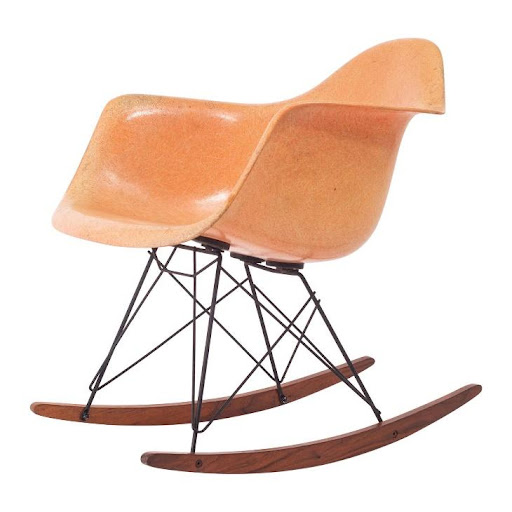
RAR Rocking Chair by Charles & Ray Eames for Zenth Plastic Factory, Mid-century Modern, 1950s
Fiberglass, Metal, Wood
Image Credit: 1stDibs
Let's talk about how Probity Appraisal Group can help determine the value of your mid-century modern furniture
This is where it gets tricky because there are different types of valuations depending on your circumstances and appraisal needs:
-
1.Fair Market Value
-
2.Replacement Value
-
3.Liquidation Value
But don't worry, we are committed to helping you navigate through the entire process, and we will ensure that you are satisfied with the outcome!
If you would like to know the value of your mid-century modern furniture piece or other type of personal property, please call or email our offices. You can also visit our website for more information on the donation and appraisal process.

